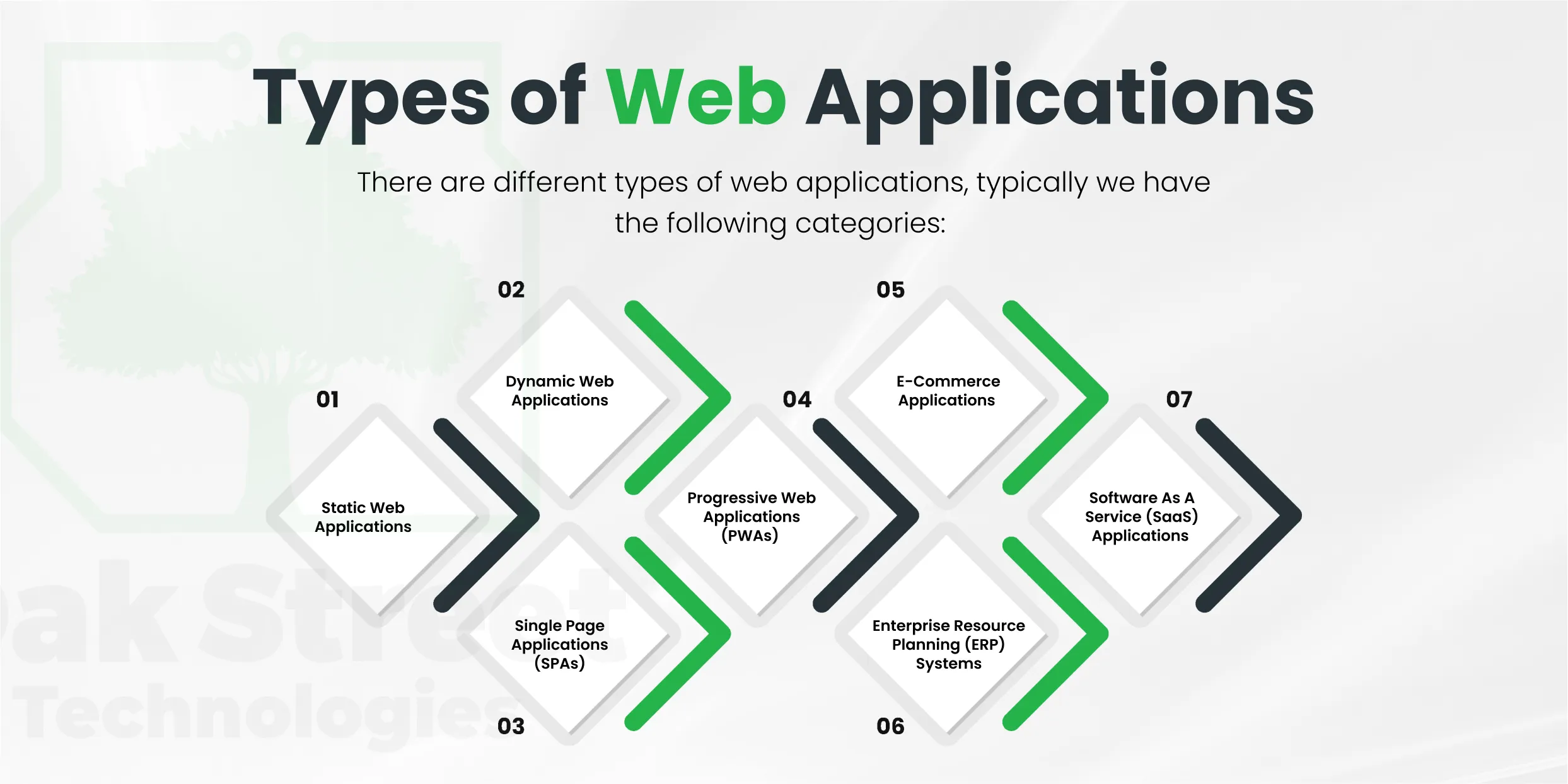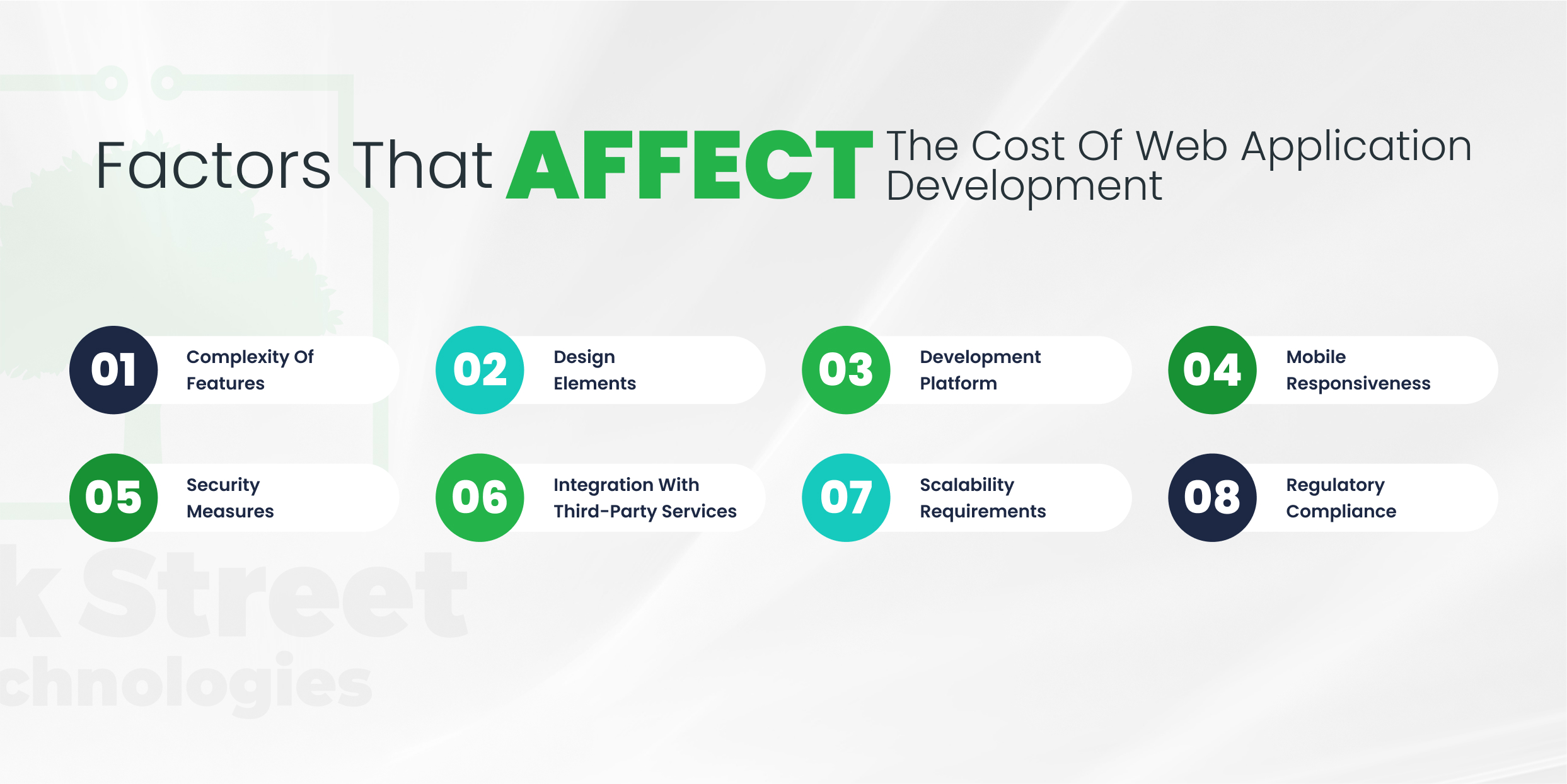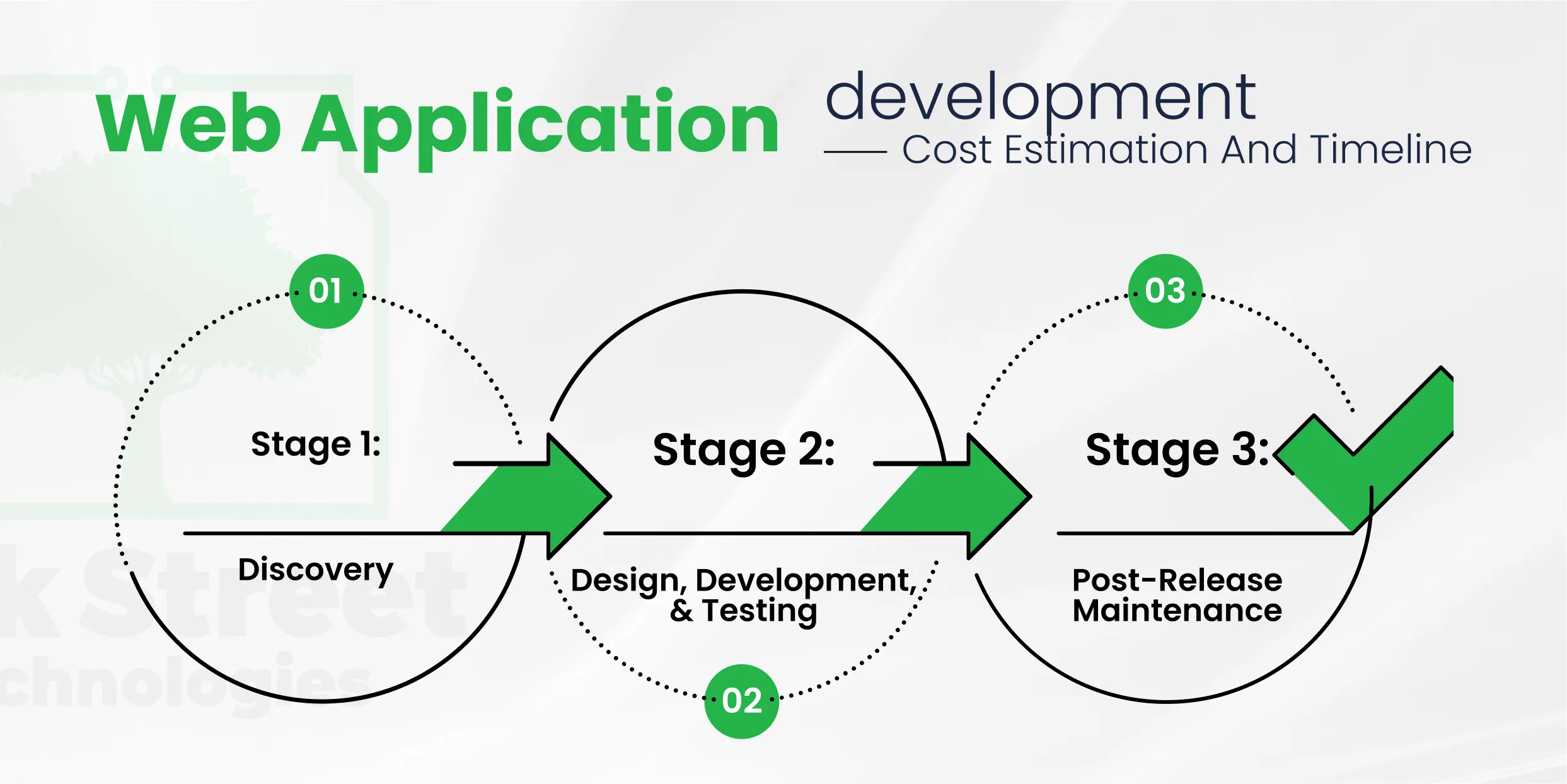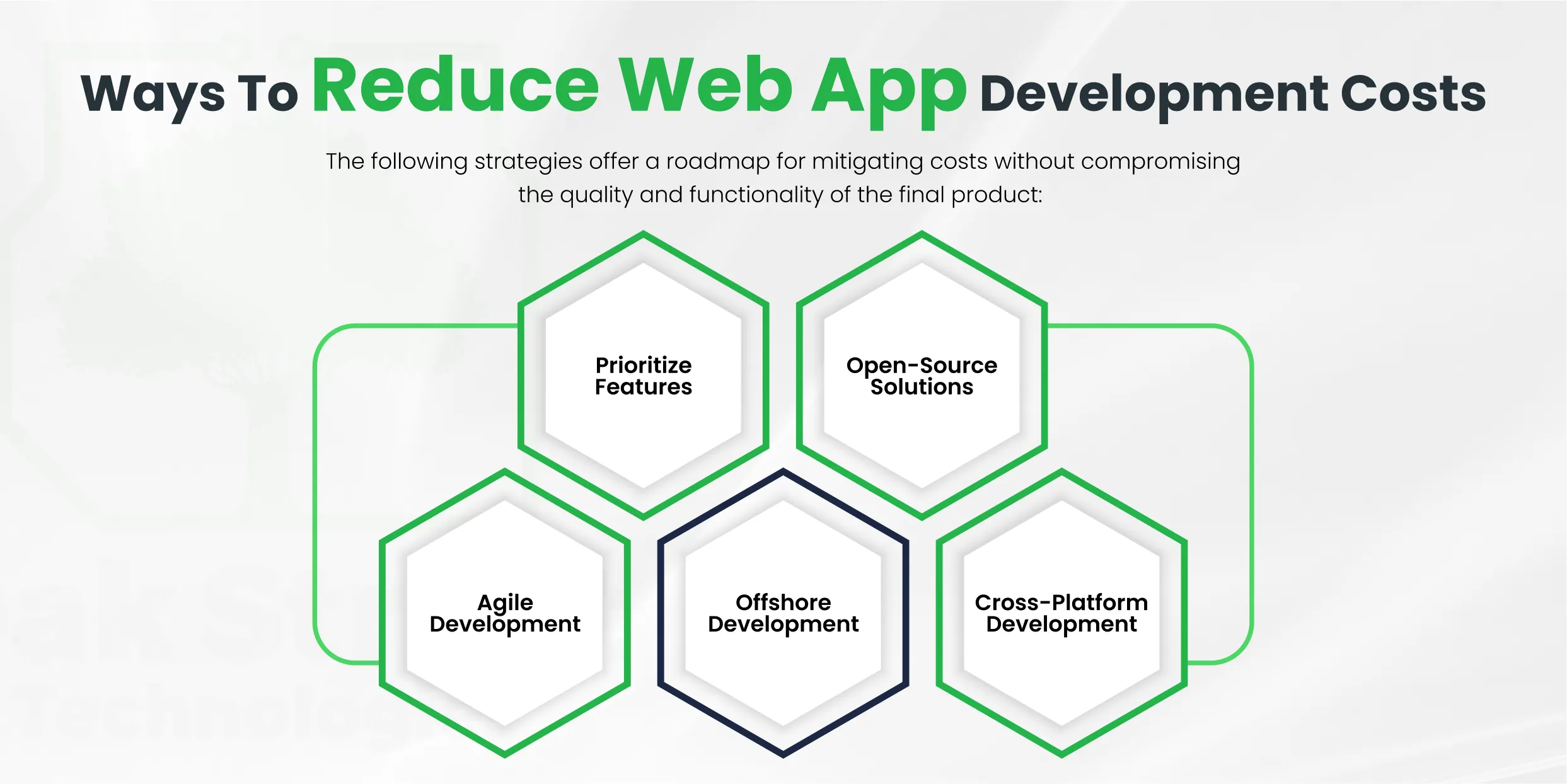Have you used Facebook, Amazon and Google Doc? In fact, almost all of us have used these platforms or are using them on a daily basis. But very few know that these are web apps, not websites.
These apps are trendier than websites these days. According to a recent study, web apps market is expected to reach U.S $673.80 bn by 2027, growing at an annual growth rate (CAGR) of 9.59%. This staggering volume of the marketplace conspicuously shows how trendy these web apps are these days. It goes without saying that the trendier, the more worthwhile it is.
Now, understanding the substantial popularity of these web apps and their promising worthwhileness, the million–dollar question that arises is the cost – how much does it cost to develop a web application? There is no standard and straightforward answer to this question as it could range from a couple of thousands to hundreds of thousands of dollars. For a more in-depth understanding, in this extensive guide, we will explore the intricacies of Web Application Development costs, shedding light on diverse types of web applications, the myriad factors influencing costs, a detailed exploration of the development stages, average cost breakdowns for specific application types, and strategies to optimize expenses without compromising quality.
Let’s dive into the blog full length to gain an informed understanding:
Types of Web Applications
Before exploring the costs of development, it is highly imperative to grasp the diverse landscape of web applications. There are different types of web applications, typically we have the following categories:

Static Web Applications
As the name suggests, static web applications are basic websites with fixed content and minimal interactivity. These web applications are considered ideal for businesses with straightforward informational needs. Static web applications are not only cost-effective but also serve as a solid entry point into the digital space. If your web app is intended for informational needs and with minimal interactivity and fixed content, then it is you.
Dynamic Web Applications
Unlike the above, dynamic web applications are a stepped-up version in terms of complexity that leverage server-side technologies to offer heightened interactivity and personalized content. Typically, e-commerce websites and content management systems fall under this category that cater to businesses with evolving content and transactional requirements. If you are looking for a web app serving dynamic purpose, it is for you.
Single Page Applications (SPAs)
Single Page Applications (SPAs) load a single HTML page and dynamically update content as users interact, resulting in unparalleled speed and responsiveness. The paradigm shift to Single Page Applications (SPAs) is driven by the desire for a seamless, app-like user experience. It is handier because it is dynamic and has greater responsiveness, serving you in a more seamless manner.
Progressive Web Applications (PWAs)
Another highly availing type that embodies the synergy of web and mobile applications is Progressive Web Applications (PWAs), designed to deliver a fast, engaging user experience. These are in vogue in the market for their offline functionality and reliability which positioned them as a transformative force in the digital landscape. Progressive Web Applications (PWAs) are a go-to choice if you desire a combo of faster and better user experience for your web application.
E-commerce Applications
As the name suggests, e-commerce applications are exclusively dedicated to online selling. These applications exhibit varying degrees of complexity, ranging from small-scale online stores to expansive enterprise-level platforms. The intricacies of e-commerce functionality play a pivotal role in determining development costs and often on the higher side comparatively. Like other applications, the cost of e-commerce applications depends upon the complexity and intricacy of the app.
Enterprise Resource Planning (ERP) Systems
The most complex of all, ERP systems seamlessly integrate diverse business processes, fostering efficiency and collaboration within organizations. The costs associated with ERP development span a wide spectrum, depending on the required features and scale. Although a bit heavier on the pocket, yet for a more complex and sophisticated web app, it is the type that fits ideally.
Software as a Service (SaaS) Applications
Software as a Service, (SaaS) is yet another highly availing type popular in the marketplace. Embracing a scalable and subscription-based model, these applications are accessed centrally through web browsers. The costs, like other types, fluctuate contingent on the complexity of features and scalability requirements. If you are seeking a scalable, subscription-based model web app then it is your type.
Factors that Affect the Cost of Web Application Development
To get a holistic understanding of the web application development costs, a deep dive into the influencing factors is paramount. To this end, the following determinants play a crucial role in its overall cost estimation:

1. Complexity of Features
The breadth and complexity of features envisioned for a web application directly impacts the development costs. Basic applications with standard and comparatively simpler functionalities lean towards the lower end of the cost spectrum, while those incorporating complex features like real-time collaboration or artificial intelligence integration incur a proportionate uptick in expenses. Put simply, the more complex the project, the costlier it is.
2. Design Elements
The choice of the development platform is pivotal and can significantly sway costs. Whether opting for open-source technologies or proprietary solutions, the choice of frameworks such as React, Angular, or Vue.js incur different financial implications. Since it is at the core of the entire process, the cost it incurs is substantial of all.
4. Mobile Responsiveness
In an era dominated by mobile devices, ensuring the seamless transition of a web application across various screen sizes is of immense importance. The commitment to mobile responsiveness necessitates additional efforts for responsive design and cross-browser compatibility, thereby pushing your budget limit. But it is heftier than other aspects like development platform.
7. Scalability Requirements
Future-proofing a web application to accommodate growth requires a strategic approach. While the upfront investment for scalability can be higher and may seem daunting at the start but it needs emphasis that in the longer run it preempts the need for significant redevelopment costs as the application expands and user demands intensify.
8. Regulatory Compliance
In the intricate business landscape, certain industries are subject to specific regulatory frameworks, and web applications within these sectors must align with stringent compliance requirements. The requirement to adhere to these regulations may amplify development costs, as additional features or security measures may be mandated to ensure regulatory conformity.
Web Application Development Cost Estimation and Timeline
A granular understanding of the development stages and associated costs are at the very heart of precise budgeting. The development process mainly consists of three main stages:

Stage 1: Discovery
The initial stage of discovery involves the comprehensive gathering of project requirements and a thorough definition of the project scope. Commonly, it encompasses market research, competitor analysis, and the crystallization of technical specifications. While incurring initial costs, the discovery stage lays the foundation for a successful project by providing a roadmap for subsequent development phases and it kind of steps the tone for the subsequent phases.
Stage 2: Design, Development, and Testing
This stage is the epicenter of development. Broadly speaking, it commonly involves the creation of wireframes, the crafting of user interfaces, coding, and rigorous testing. Since it is at the heart of the whole process, it represents the lion’s share of the budget. All the energies and effort basically go into this phase as it essentially brings the conceptualized web application to life – translating the idea into practical manifestation. Not only just the development, but also iterative testing ensures the rectification of bugs and adherence to specified requirements, leading to creating a desired masterpiece – web application tailored to your peculiar needs.
Stage 3: Post-Release Maintenance
Now, finally getting done with the development of the app, ongoing maintenance becomes the linchpin for sustained success. Addressing issues, implementing updates, and ensuring optimal performance requires some additional budget, pushing the development cost. While constituting ongoing costs, this phase is indispensable for the application’s sustained viability and success.
Average Web App Development Cost
As stated above, the costs of developing web app vary depending on the project’s intricacy. However, on average, web development costs paint the following picture:
How much does a SaaS web application cost?
It requires a nuanced understanding of the costs before embarking on the journey of developing a Software as a Service (SaaS) web application. The financial trajectory of a SaaS application depends on various factors, with complexity and scalability standing as paramount determiners. SaaS applications, particularly known for their scalability and subscription-based revenue models, are characterized by a diverse range of features. The cost spectrum for SaaS development can be broad, ranging roughly from a conservative $25,000 to a substantial $1 million or more. The gap between these figures’ hinges on the complexity of features envisaged, scalability requirements, and the potential for future expansions.
Simpler SaaS applications cater to specific niche markets or those designed to address relatively straightforward business needs. As one ascends the complexity ladder, witnessing the integration of advanced features, real-time collaboration capabilities, and intricate scalability models, the financial commitment proportionally escalates.
The relatively complex SaaS applications are designed to cater to extensive user bases, demanding intricate features and robust scalability measures. In such instances, the development cost becomes a strategic investment, laying the groundwork for a SaaS behemoth capable of navigating the dynamic demands of the market.
How much does ERP system development cost?
The world of Enterprise Resource Planning (ERP) system development unveils a financial landscape marked by both substantial commitment and potential return on investment. The costs associated with ERP system development are characterized by their wide-ranging diversity, mirroring the diverse needs and complexities of businesses. On the conservative end of the spectrum, the development of a basic ERP system may incur a cost of around $25,000. These rudimentary systems are designed for smaller enterprises or those with less intricate business processes. As the scale and complexity of business operations increase, the financial commitment for ERP development can soar to surpass the $5 million mark.
The variance in ERP development costs is tied to the unique requirements of each business. Small to medium-sized enterprises seeking streamlined processes may find their needs met within the lower cost brackets. In contrast, large enterprises with multifaceted operations necessitating intricate integrations, extensive customizations, and advanced features will inevitably witness a substantial uptick in development costs.
How much does it cost to develop a marketplace web app?
The development of a marketplace web application introduces another layer of financial complexity. Facilitating transactions between buyers and sellers, marketplace applications are pivotal in today’s digital economy. The cost of developing a marketplace web app, much like SaaS and ERP development, is shaped by factors such as scale, features, and complexity.
At the lower end of the spectrum, a basic marketplace web app may cost around $20,000. These applications, catering to niche markets or small-scale transactions, embody simplicity in their features and operational scope. As the marketplace widens, incorporating advanced features such as secure payment gateways, extensive search functionalities, and intricate user profiles, the development costs can surge beyond the $100,000 mark.
The upper-level web app development costs are often reserved for large-scale platforms seeking to dominate expansive markets. These applications, characterized by their ability to handle a plethora of transactions, diverse user profiles, and advanced functionalities, may require substantially higher financial commitments. The complexity of handling transactions securely, managing multiple vendors, and ensuring a seamless user experience contribute significantly to the elevated costs.
Ways To Reduce Web App Development Costs
As businesses seek to develop a web app, the quest for financial optimization becomes paramount. The following strategies offer a roadmap for mitigating costs without compromising the quality and functionality of the final product:

1. Prioritize Features
Adopting a meticulous approach to feature prioritization is more than a cost-saving strategy; it is in fact a fundamental principle of strategic development. Identifying and prioritizing essential features for the initial release facilitates the adoption of the Minimum Viable Product (MVP) approach. By focusing on core functionalities, businesses can expedite the development process, reduce initial costs, and gather user feedback for informed subsequent releases.
2. Open-Source Solutions
The embrace of open-source technologies and frameworks emerges as a potent cost-saving avenue. Beyond the altruistic contribution to the open-source community, leveraging these solutions can substantially reduce licensing costs. Open-source frameworks, with their robust developer communities and active support, empower businesses to harness cutting-edge technologies without exorbitant financial commitments.
3. Agile Development
The adoption of agile development methodologies transcends a mere project management philosophy; it becomes a financial imperative. Agile methodologies emphasize incremental progress, iterative development, and adaptability to evolving requirements. By embracing this approach, businesses can respond effectively to changes, mitigate the risk of costly mistakes, and optimize development costs throughout the project lifecycle.
4. Offshore Development
Strategic outsourcing to countries with lower labor costs has become a prevalent strategy for cost optimization. However, this approach demands a judicious balance. While it offers the potential for significant savings, businesses must carefully navigate potential challenges such as language barriers and time zone differences. Establishing effective communication channels and project management protocols is crucial to ensuring the success of offshore development endeavors.
5. Cross-Platform Development
The choice between developing separate applications for various platforms or opting for cross-platform development is a crucial cost consideration. Cross-platform development, with a single codebase catering to diverse platforms, presents an attractive alternative. Not only does it streamline development efforts, but it also ensures a consistent user experience across a spectrum of devices. This approach aligns with the financial optimization objective, reducing the development effort and costs associated with platform-specific coding.
Final Thoughts
While developing a web application, it is imperative to view the financial outlay as an investment rather than a mere expense. A well-conceived and flawlessly executed web application has the potential to serve as a linchpin for business growth and operational efficiency. A nuanced understanding of the factors influencing costs, coupled with the adoption of cost-saving strategies, empowers businesses to navigate the complexities of web application development with acumen and foresight.
In a nutshell, the realm of web application development costs is multifaceted and dynamic. A strategic and informed approach, coupled with an appreciation for the nuances of each development stage, positions businesses for success in the digital arena. As technology continues to advance and business landscapes evolve, the investment in a well-crafted web application proves to be a cornerstone for innovation, growth, and enduring relevance in the digital ecosystem.
It is never easy to put your ideation to practice, but with OakStreet Technologies it is a breeze. Our innovative web app development services have been at the forefront of technological innovation and nuanced web practices. With a best-in-class team that maintains a track record of delivering sophisticated web applications over the years, we deliver tailor-made high-performing Web Application Services that bring your ideas to reality in the most desirous and seamless manner. Drop a line to have a robust digital presence!
Frequently Asked Questions (FAQs)
While grasping the web application development costs, addressing frequently asked questions adds a layer of comprehensiveness to our exploration. So, let’s explore a few FAQs:
What is the average cost of building a web application?
The average cost of building a web application is subject to significant variation based on factors such as complexity, features, and industry. As a broad benchmark, small to medium-sized web applications may range from $20,000 to $100,000, while larger and more intricate endeavors can surpass the $1 million mark.
How long does it take to develop a web application?
The development timeline for a web application depends upon its complexity. Simple projects may be completed within a few months, while more intricate applications can span a year or more. The discovery and design phase typically takes a few weeks, followed by several months of development and testing.
Are there ongoing maintenance costs?
Yes, ongoing maintenance is an inherent component of the web application lifecycle. Essential for ensuring sustained functionality and security, maintenance costs typically hover around 15% to 20% of the initial development cost per year. This financial commitment is essential for adapting to evolving technological landscapes, addressing emerging security threats, and incorporating necessary updates to keep the application relevant and efficient.



